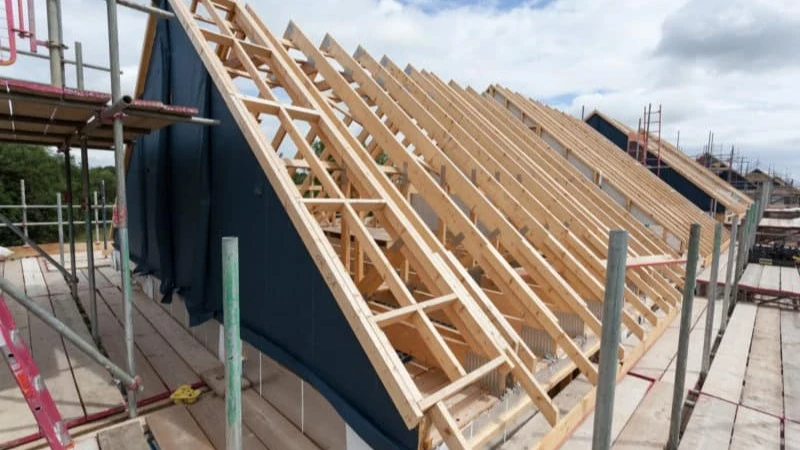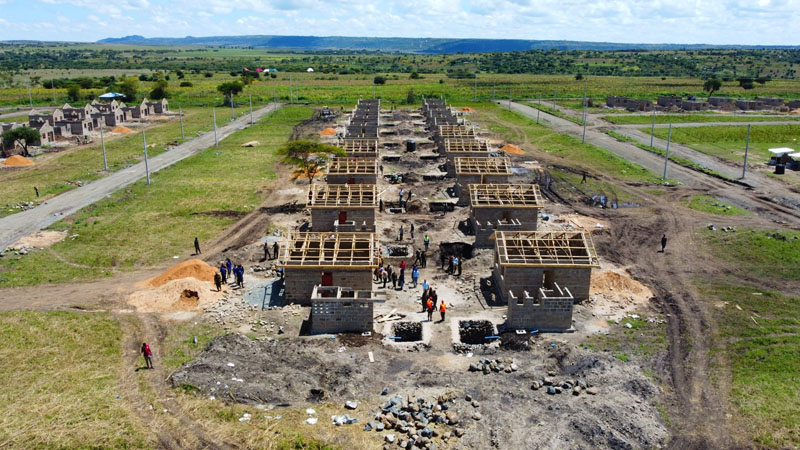Engineered wood can decarbonize the construction industry

At a time when sustainability and ESG (environmental, social, and governance) concerns are prevalent, there is a crucial need to focus on a sector that accounts for 38% of all global CO₂ emissions and consumes 30% of global resources: the construction industry. In 2022,
at COP27, the United Nations announced the Clean Construction Accelerator, a program with actions designed to reduce greenhouse gas production by up to 50% by 2030. A report by ARUP and the World Business Council for Sustainable Development suggests that half of building emissions come from embodied carbon, which is generated in the manufacturing and transportation of materials, not just in construction sites and buildings themselves. It is precisely in this scenario that we see an opportunity for the sector. What is the only renewable material in construction that retains carbon instead of emitting it? Wood.
When thinking of wood, another question tends to arise: "How can wood be sustainable if we need to cut down trees for it?” Ana Belizário, the Commercial Director of Urbem, a large-scale Brazilian mass timber industry, explains throughout this article how planting trees specifically for consumption is not only a sustainable alternative but also an excellent practice in combating the climate crisis and can regenerate the construction sector.
The activity of the forestry industry—also known as silviculture—is the regular planting of forests, usually intended for a specific commercial use. It emerged in the late 18th century in Germany and has since developed on a global scale, producing forests of various ages, species, and uses.
In Brazil, this activity began in a structured manner in the late 1960s, when the development of the Brazilian industry began to demand a large amount of wood, which was used as a fuel source. The introduction of the forestry industry during this period was a strategy for producing abundant, available, and controlled raw materials as an alternative to extracting native Amazonian wood.
As a strategy for accessing raw materials, its ultimate goal is the preservation of original biomes, usually older and more complex ones, i.e. replacing non-renewable with renewable raw materials. For example, when we plant forests to build buildings, we avoid the removal of stone and sand from the environment, which cannot be replaced or regenerated.
The most commonly used species to produce structural timber for construction (or mass timber) are conifers, which have good structural strength, low density, and rapid growth. They work particularly well in the manufacturing stages of structural elements, such as sawing, drying, gluing, finishing, and connector installation.
One of the most important ecological balance strategies for planted forests is combined management; that is, in forestry planting areas, conservation or restoration of the related original biome is required by Brazilian legislation. In the case of pine forests, the associated biome will always be the Atlantic Forest.
Recalling the complex network of Brazilian biomes, pine forestry in the southern and southeastern regions of the country, in practice, acts as a protection strategy against Amazon deforestation, as it supplies enough wood to meet the various demands of contemporary civilization.
Silviculture also avoids the extraction of ores, rocks, and sand–non-renewable resources that must be consumed strategically to always be available. The exponential growth of populations and, consequently, the cities that we need to accommodate this increase in the coming decades require us to think about alternative solutions that can be sustained in the long term.
Furthermore, as trees grow, the carbon dioxide used in photosynthesis is removed from the atmosphere and stored inside the wood. When producing cement or steel, we need to burn fossil fuels, which release high amounts of carbon into the atmosphere during the production process. Thus, silviculture can be seen as a major sectoral strategy for mitigating carbon emissions from the construction industry.
Apart from all these benefits for the sector, the forestry industry also has the power to restore degraded areas (which have been exhausted after economical use without environmental preservation strategies), which in Brazil represent a huge portion of the territory.
A planted forest helps to restore the soil, replenish groundwater, and increase air humidity. If associated with areas designated for Atlantic Forest regeneration, planted forests can help reverse environmental degradation through economically impactful and sustainable long-term activities.
For all the reasons mentioned above, planting trees to construct buildings is one of the most effective strategies for decarbonizing the construction industry today. As mentioned earlier, mass timber begins to store carbon even before construction starts, unlike other building materials, making it start as carbon-negative, with the rest of the construction contributing to a sustainable outcome in the end.
This proves that despite the construction sector currently being the highest polluter, there are still means and methods to be explored, making it increasingly sustainable and environmentally beneficial for the planet.
Top Headlines
© 2024 IPPMEDIA.COM. ALL RIGHTS RESERVED























